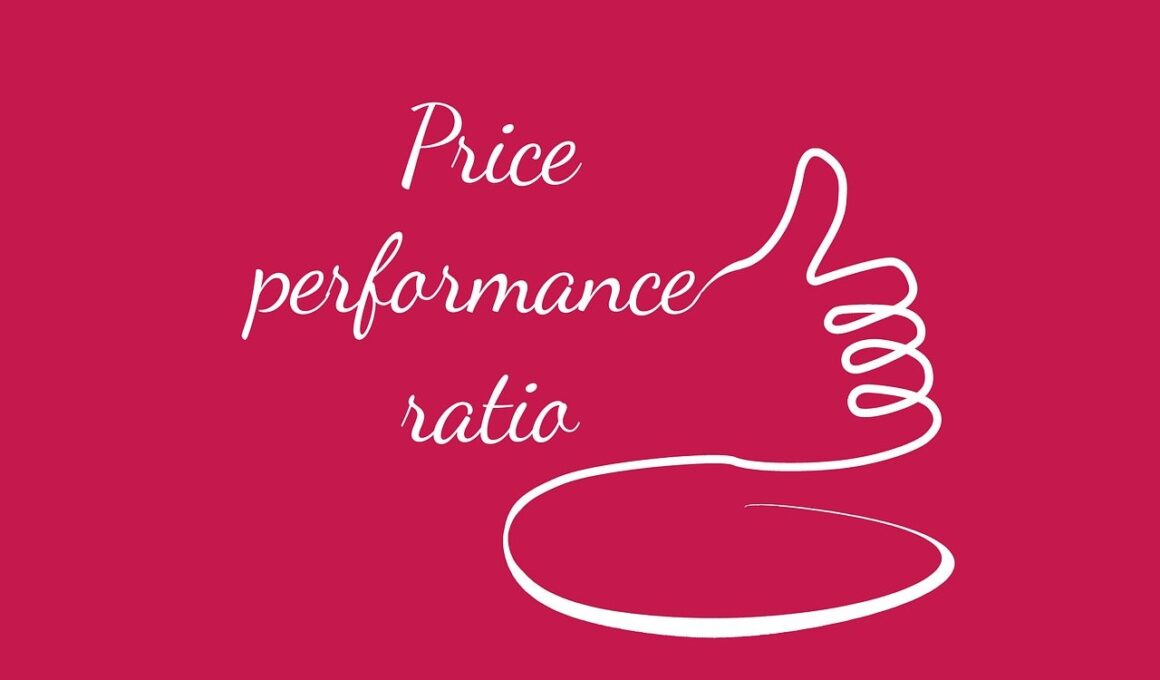The Impact of Mutual Fund Expense Ratios on Investor Returns
When investing in mutual funds, understanding expense ratios is critically essential for any investor. Expense ratios, which represent the annual fees paid by mutual fund investors, can significantly affect long-term returns. These fees are expressed as a percentage of total assets and encompass operational costs, management fees, and other expenses. For instance, a fund with a 1% expense ratio may seem manageable, yet over time, this deduction can substantially diminish an investor’s returns. Over a lengthy investment horizon, a seemingly small increase in fees can equate to tens of thousands of dollars lost in earnings, compounding annually. Therefore, it becomes imperative to carefully analyze these ratios before committing to a fund. Investors should look for low-cost funds that provide the best value in terms of investment goals. Conducting thorough research can lead to identifying mutual funds that align profitability with affordability, ultimately benefiting an investor’s financial future. Calculating the net impact of these ratios can enhance return predictions and assist in selecting suitable investment vehicles.
Another critical factor to consider regarding expense ratios is their direct impact on risk return profiles. Higher expense ratios may indicate a promise of superior management, but they also add a burden to the overall expense load. Investors must balance potential performance against the associated costs when selecting mutual funds. It’s wise to seek funds that may have lower historical volatility while offering corresponding low expense ratios. Diversifying across various funds with differing expense structures can also mitigate risks while ensuring stable returns. Investors should utilize comparative tools to analyze performance metrics alongside expense ratios among different funds within the same category. This method can unveil discrepancies and clarify which funds deliver value for the costs incurred. As the investment landscape continues to evolve, understanding how to evaluate mutual fund performance in tandem with their expense ratios facilitates informed choices. It’s paramount to remain knowledgeable about how these expenses eat into returns over time and adapt strategies to avoid premium costs. By lining up performance expectations with cost structures, one can maximize potential gains and achieve investment goals more effectively.
Types of Expenses in Mutual Funds
Understanding the distinct components that constitute the overall expense ratio of mutual funds allows investors to make informed choices. Typically, an expense ratio includes various elements such as management fees, custodial fees, and marketing or distribution costs. Management fees, which typically form the bulk of the expense ratio, compensate fund managers for their expertise in selecting securities and managing the fund’s portfolio. Custodial fees are often incurred for safekeeping and administering investment assets. Additionally, funds may include 12b-1 fees, which cover marketing and distribution costs associated with promoting fund shares. Examining these components provides insight into why some funds may have higher costs than others. Lower expense ratios are generally preferred, as they present the potential for superior net returns over time. Investors should utilize resources such as fund prospectuses and rating agencies to analyze these fees comprehensively. This knowledge will arm investors with the information necessary to evaluate if they receive value commensurate with the fees they pay. Before investing, these considerations should be weighed carefully to optimize long-term investment success.
The impact of expense ratios on investment strategies cannot be overstated as they play a vital role in shaping investment decisions. For instance, cost-conscious investors may gravitate towards exchange-traded funds (ETFs) or index funds, which typically exhibit lower expense ratios compared to actively managed mutual funds. This choice acknowledges the growing popularity of passively managed funds that track market indices rather than incur higher costs associated with active management. Aligning expectations with investment horizons is crucial, as investors may find that initial higher expenses may be offset by latent returns down the line. Regular assessments of portfolio performance alongside expense ratios can support better decision-making over time. Additionally, dollar-cost averaging methods can empower investors to focus on building wealth progressively rather than fixating purely on expense ratios. Furthermore, adopting a long-term outlook can yield decisions that withstand market fluctuations and minimize the impact of fees. Ultimately, investor education regarding expense ratios harmonizes choices with overall investment ambitions, paving the way for strategic growth through more informed financial practices.
Strategies for Minimizing Expense Ratios
Minimizing expense ratios should be a priority for investors keen on maximizing their returns in mutual funds. One effective strategy involves choosing funds with a proven track record of low expense ratios without compromising performance. Index funds, which are designed to mirror the performance of a benchmark index, often exhibit considerably lower fees compared to actively managed options. Moreover, investors can benefit from utilizing fund comparison tools available on financial websites. By analyzing funds collectively, investors can easily pinpoint those that strike a balance between reasonable expenses and satisfactory performance. Additionally, considering investment vehicles with no-load options can eliminate the burden of upfront sales charges, contributing to lower overall expense ratios. Additionally, one can assess the average expense ratios of peer funds within the same category, ensuring that management costs remain competitive. Understanding fund structures, while contemplating long-term versus short-term investing goals, will optimize investment strategies and reduce unnecessary costs. Holistically, applying these methods provides greater control over investment expenses while maintaining a focus on effective financial growth through mindful decisions.
Another method to analyze and reduce expense ratios is through constant portfolio review and adjustment. Regularly monitoring fund performance enables investors to identify areas with elevated expenses impacting overall returns. Assessments should encompass each fund’s expense ratio compared to benchmarks and category averages, ensuring that the fees align fairly with investment performance. If a fund consistently underperforms or exhibits higher expenses relative to peers, it may be prudent to consider reallocating funds into more cost-efficient alternatives. Furthermore, investors should remain updated on market changes, as new funds frequently emerge with compelling low-cost options. Keeping an eye on industry trends can unveil opportunities to switch to lower-cost mutual funds that deliver satisfactory returns. It’s important to stay proactive in maintaining an optimal asset allocation strategy, adjusting investment choices as necessary to avoid potential pitfalls. Through a systematic approach, maintaining a focus on reducing expenses without sacrificing investment quality can lead to substantial long-term savings. Each decision should contribute towards enhancing total returns, ultimately reinforcing the strategy behind investments with confidence.
Conclusion: The Importance of Expense Ratios
In conclusion, understanding the critical role of mutual fund expense ratios is essential for any investor seeking to maximize returns. Investors must prioritize cost over time, acknowledging how these ratios influence actual earnings. Consequently, a thorough comprehension of fund expenses prepares investors to make better choices and shape financial futures positively. Strategies focusing on low-cost funds, coupled with ongoing assessments of the expense ratios, should be ingrained in an investor’s approach. Not only do they provide clarity, but they can also lead to new strategies aimed at minimizing expenses fairly easily. Recognizing that every percentage point saved compound over time clarifies the longer-term benefit of minimizing costs. As markets evolve, investors ought to remain diligent in adjusting their strategies to capitalize on investment opportunities that help keep expenses low. Therefore, maintaining an awareness of the costs associated with any investment is paramount in reaching financial goals. Ultimately, diligent engagement with expense ratios will serve as a guiding principle for all mutual fund investors seeking to enhance their overall investment experience and outcomes.
Fostering an ongoing dialogue about the significance of expense ratios in mutual fund investing may also be beneficial. As more investors learn the intricacies behind fund costs, they cultivate a higher level of financial literacy. Promoting understanding could lead to a broader shift towards embracing affordable investment strategies that emphasize performance without excessive fees. Educational resources, workshops, and discussion forums can enhance an investor’s awareness about fee structures and encourage them to advocate for cost-efficient funds. Explore communities focusing on investment discussions, engaging with peers to uncover unique insights. Lending support to initiatives aimed at enhancing accessibility to funding knowledge makes for informed investors. With newer generations keen on investment knowledge, emphasizing the conversation around costs empowers them to take ownership of their financial futures. The impact of expense ratios connects directly to investment outcomes, underscoring the need for collective vigilance. Seeking clarity and transparency in investing fosters better environments for future fund investors. There’s an immeasurable benefit to collective knowledge, driving home the point that diligent awareness of expense ratios is paramount.


